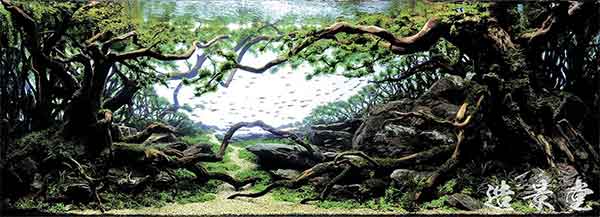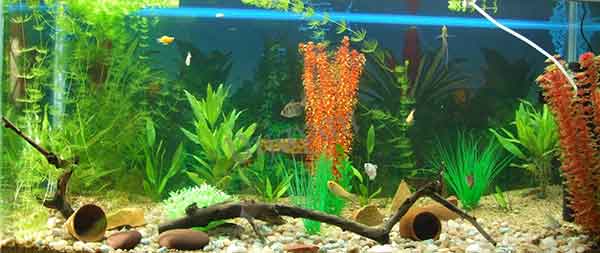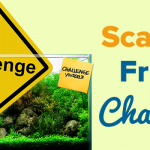ScapeFu023: 3 Ways to put Story into Your Aquascape
[app_audio src=”http://traffic.libsyn.com/scapefu/scapefu023.mp3″]Hi, Welcome to ScapeFu Episode 23! Today I’m going to give you 3 ways to put story into your aquascape it and make it awesome!
My name is Art Pennom and I’m the host of ScapeFu, the podcast dedicated to giving you the skills, passion and inspiration to aquascape. For those that are new, welcome and thank you for listening. I hope you become a loyal listener and member of the ScapeFu army. We are leading the charge to grow the art of the planted aquarium globally and have tons of fun along the way.
Today I am flying solo and I’ll be sharing with you 3 ways to put a story into your aquascape and make it awesome.
Aquascaping News
3 Ways to Put Story Into Your Aquascape
A visual story is a powerful way to give your viewer a taste of a situation without having to be there. Look at all the award-winning aquascapes and you’ll find that each tells a story. Each places the viewer squarely in the scene and evokes a feeling deep inside.
In last week’s episode, scapefu.com/22, Balazs Farkas mentioned that you need to create a story and then let it dictate your work. But how do you do that? That is what today’s episode is about.
Let’s look at two aquascapes that I randomly chose from the Internet. We will use them today as our guides.
The first is Pale Wind by Takayuki Fukada of Japan. It won the Gold Prize in the 2013 International Aquatic Plants Layout Contest.

The other is a picture of a planted aquarium that I found through a simple Google search. I’ll be using these images to show you the difference between an aquascape with story and one without.
You can find the images in this episode’s cover image if you’re using a podcast catcher app or in the show notes by going to scapefu.com/23. If you’re in the car, riding a motorcycle or otherwise focused on something else, PLEASE wait until later when it’s safe!
So, before we get to the 3 ways you can put story into your aquascape, there is one thing that ties them together. In fact, it a string that ties all good aquascapes together.
That thing is “Preparation”. The thing that makes the difference between an amateur and a professional in almost every field is usually preparation.
You need to start with the end in mind. You don’t need to have a crystal clear image but you do need to have a relatively good idea of where you want to end up.
Take the time to think and prepare about what you want your aquascape to convey. Is it a melancholy journey through a forest on a cool winter’s day? Is it the joy of a beautiful sunrise on a warm midsummer’s morning? Is it the majesty of a cresting mountaintop on a windy autumn day? Is it a forgotten path through the verdant and well-trimmed Shire where Hobbits live?
Do you see how I’m putting emotion, feeling, color into it? Do you see how I’m just giving a few descriptive works and your mind is filling in the rest in your mind’s eye?
This is what you must take the time to envision BEFORE doing the following three things.
1. Go Wide
- A wider perspective is typically better for aquascapes as you are trying to get the viewer to suspend disbelief. In other words, forget that they are viewing a confined space and imagine themselves in the scene.
- Compare the two aquascapes
2. Details
- Use of details
- Hints at the story. The strongest stories we read are the ones that leave us with guess-work and hints to pique our interest. The same goes for aquascapes. If you show the entire subject, or the entire scene, you are giving your viewer the answers. If you want them to linger on your aquascape, fill it with hints, but not complete answers.
- Compare the two aquascapes
3. Feeling
- Every good aquascape, or work of art for that matter, evokes a feeling in you. Go take a look at your aquascape. What feeling does it evoke in you? No, don’t tell me repulsion, frustration, disappointment, anger! If you feel any of those, you simply having put enough story into it yet.
- Some ways to put feeling into an aquascape are by using traditional techniques such as the use of:
- Light and Dark – If you want something to look interesting, don’t light it all.
- Composition – Bring out the idea of the image thru visual elements in your composition. Create a visual focal points to isolate your subject. Be original. Avoid cliches. Think about what it is you are trying to say and how you can best convey this in your composition. Effective composition can be pleasing or disturbing, depending on your intention. The viewer’s eye should be drawn to the center of attention naturally.
- The viewer’s eye should be drawn naturally to the center of attention. Any leading lines should direct to that point without making the viewer’s eye jump to and fro around the image.
- Use of focus – Depth of Field, or selective focus, is a great way to depict important details. Your eyes are drawn to areas of sharp contrast (which could be light, or focus) before areas of low contrast. This means that you can use depth of field to very effectively direct your viewer’s eye to what you want them to look at.
Homework:
Set aside a few hours over the next week to practice these three things with your aquascape. Choose a subject or theme. Try to envision how you can make your aquascape capture that story.
- Do you have the right perspective (go wide)?
- Do you have details that hint at the story?
- Do you get the feeling that you’re going after?
I’m happy to help. Please feel free to send me before and after pictures of your aquascape. Let me know how it goes.
You can always reach me at art@scapefu.com.
Housekeeping:
We do not advertise the ScapeFu podcast. The only way we can spread the word about our work here is to ask you to tell others about ScapeFu. So, if you liked what you heard today or in the past on ScapeFu and you appreciate the work I do on ScapeFu.com, I ask you to please help us by telling just 1 other person about ScapeFu. We thank you so much for that.
We are also putting much more work into our email newsletter. It’s free. All you need to do is register at scapefu.com. In return, you will get notified when we have a new show or post, you will receive occasional tips, tricks and discounts on products that we care about and every Sunday you’ll get our newsletter containing in-depth articles, weekly assignments to improve your aquascaping and much more. Lastly, although I can’t tell you what it is just yet, simply by becoming a free email subscriber to ScapeFu, you will be entered to win a really amazing prize that everyone is going to love. It’s cutting edge, expensive and every planted aquarium hobbyist would love to own it. We will be raffling it to subscribers in April.
If you’re into social media, you can reach me via
* Twitter at [@ScapeFu](http://twitter.com/scapefu) &
* Our [ScapeFu Feedback page](http://scapefu.com/contact/)
Lastly, please subscribe to the ScapeFu Podcast so that you won’t miss an episode: [iTunes](https://itunes.apple.com/us/podcast/scapefu/id389713289?mt=2) , [Stitcher](http://www.stitcher.com/podcast/art-pennom/scapefu-podcast), [Soundcloud](https://soundcloud.com/scapefu)
Podcast: Play in new window | Download (21.4MB)
Subscribe: iTunes | Android | RSS







One Comment on “ScapeFu023: 3 Ways to put Story into Your Aquascape”
Pingback: Use of Contrast in Aquascaping - ScapeFu Friday Challenge - ScapeFu